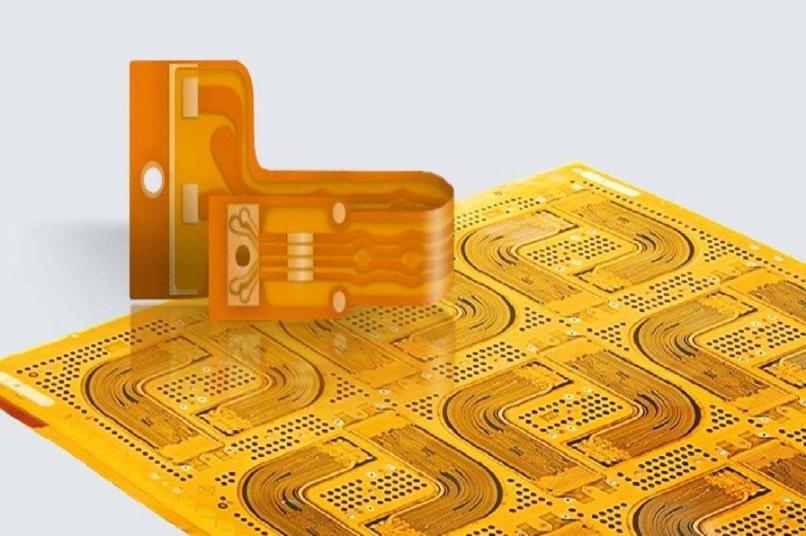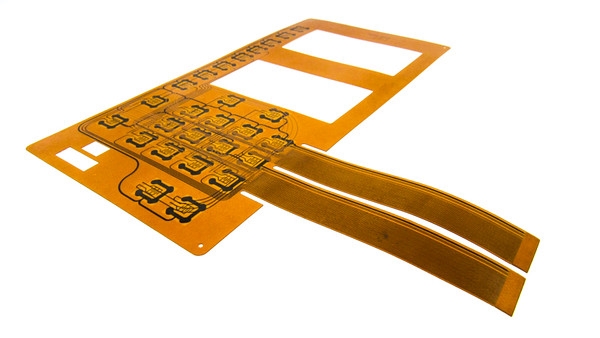Flexible Printed Circuits (FPCs) play a pivotal role in modern electronics, offering versatility and space efficiency crucial for today's compact devices. Their bendable nature allows intricate designs that rigid PCBs cannot accommodate, enabling innovative product form factors and enhanced functionality. However, designing FPC PCBs presents unique challenges such as ensuring reliability under repeated flexing and optimizing signal integrity in constrained spaces. Overcoming these challenges opens doors to opportunities in wearable tech, medical devices, and automotive applications, where lightweight, durable, and adaptable circuitry is paramount for success in the ever-evolving electronics landscape.

Understanding FPC PCB Design Fundamentals
Definition and Basic Structure of Flexible Printed Circuits (FPCs)
Flexible Printed Circuits (FPCs) are specialized PCBs designed to accommodate curved shapes and frequent bending. Constructed from durable materials like polyimide or polyester film, FPCs feature conductive copper circuits printed or bonded onto a flexible substrate. They come in single-sided, double-sided, or multilayer configurations. FPC design is categorized into OEM, where production follows customer-provided designs and materials, and ODM, which involves custom designs tailored to specific application needs and performance parameters.
Advantages of FPCs Over Traditional Rigid PCBs
FPCs offer significant advantages over rigid PCBs, particularly in modern electronics requiring versatility and durability. Their flexibility enables fitting into tight or irregular spaces, ideal for compact devices. Their lightweight nature reduces overall device weight, crucial for aerospace and consumer electronics. Moreover, their ability to withstand bending enhances device longevity and reliability.
Key Considerations in FPC Design: Flexibility, Space-Saving, Durability
Designing FPCs requires addressing key considerations such as flexibility, space efficiency, and durability. Ensuring the circuits endure mechanical stresses without failure is critical. Space-saving is achieved through innovative layering and layout techniques. Material selection plays a crucial role in enhancing durability against environmental and mechanical challenges throughout the product's lifecycle.
Best Practices in FPC PCB Layout Design
Importance of Layout Planning for FPCs
Effective layout planning is essential in FPC design to optimize space usage and maintain functional integrity during bending. Techniques like impedance control and strategic routing minimize signal loss and cross-talk between traces. Best FPC provides customized solutions tailored to specific impedance, current, and voltage requirements, even without original schematic diagrams.
Minimizing Electromagnetic Interference (EMI) in FPC Designs
Minimizing EMI in FPCs requires meticulous attention to layout and shielding techniques. Ground planes and shielding layers effectively contain and redirect electromagnetic radiation. Thoughtful placement of components and trace routing further reduces EMI susceptibility. Best FPC reviews and optimizes customer-provided designs or creates bespoke solutions to meet application needs while ensuring compliance with EMI standards.
Examples Illustrating Effective Layout Strategies
Effective FPC layout strategies are demonstrated through case studies such as wearable devices requiring wrist-wrapping FPCs. These designs prioritize thin, multilayer structures with strategically placed components for flexibility and functionality. In automotive applications, FPCs integrated into tight dashboard spaces utilize double-sided and rigid-flex configurations for mechanical resilience and high-density component integration. These examples highlight how advanced design and planning facilitate successful FPC implementation in challenging environments.

Innovations in FPC Materials and Manufacturing
Advancements in FPC Materials
Flexible Printed Circuits (FPCs) leverage a diverse range of materials, prominently featuring polyimide (PI), commercially known as "Kapton," manufactured by DuPont. Renowned for its robust thermal stability exceeding 500°C, mechanical resilience, and chemical resistance, polyimide is pivotal in demanding applications. It boasts low coefficients of thermal expansion and superior dielectric properties, essential for ensuring dependable long-term performance across varying environmental conditions.
Evolution of Conductive Materials and Their Performance Impact
Recent strides in conductive materials, such as advanced conductive inks and nanoparticle-enriched substrates, have substantially bolstered FPC capabilities. These materials augment electrical conductivity and flexibility, enabling intricate and densely packed designs. Their deployment enhances signal integrity and durability, meeting the escalating demands of contemporary electronic devices for robust and reliable performance.
Emerging Trends in Additive Manufacturing for FPCs
Additive manufacturing is revolutionizing FPC production by enabling intricate geometries and minimizing material waste. This technology facilitates layer-by-layer construction of FPCs, optimizing material usage and expanding design flexibility. Rapid prototyping capabilities accelerate iterative design processes, fostering innovation in FPC design across various industries.
Design Considerations for High-Performance FPC Applications
Challenges and Solutions in High-Frequency FPC Design
Designing FPCs for high-frequency applications entails addressing challenges like signal integrity and electromagnetic interference. To mitigate these issues, designers employ advanced shielding techniques, precise impedance control, and materials with enhanced dielectric constants. Effective thermal management strategies, such as thermal vias and conductive planes, dissipate heat efficiently. Integrating sensors and components directly onto FPCs enhances functionality while optimizing space, crucial for aerospace and wearable technology applications.
Successful Applications of High-Performance FPCs
An illustrative case involves a telecommunications firm integrating advanced FPCs into satellite communication systems. These FPCs were tailored to handle high frequencies with minimal signal loss, utilizing specialized materials and innovative layout designs incorporating embedded passive components and effective heat management solutions. This integration not only reduced system size and weight but also enhanced reliability and performance in the rigorous conditions of space environments.
Testing and Validation of FPC PCB Designs
Ensuring Reliability and Performance through Testing
Thorough testing is indispensable in the FPC design process to validate adherence to specifications and durability under real-world conditions. Bend testing, thermal cycling, and electrical testing are standard methodologies used to assess FPC durability, stability, and electrical functionality. These rigorous tests identify potential failures early in the design phase, mitigating risks, lowering costs, and ensuring robust product performance.
Role of Simulation Tools in Predicting FPC Behavior
Simulation tools play a pivotal role in predicting FPC behavior across diverse physical and environmental scenarios. By modeling flexing, thermal stress, and electrical loads, designers preemptively identify and rectify design and material defects. This proactive approach accelerates design refinement cycles, facilitates prompt customer feedback integration, and underpins the delivery of high-quality, dependable FPC solutions tailored to precise customer requirements and application contexts.
Closing Words
Best FPC exemplifies cutting-edge techniques and innovations in optimizing Flexible Printed Circuit (FPC) PCB design. By leveraging advanced materials such as polyimide and pioneering conductive materials through additive manufacturing, Best FPC enhances circuit performance and efficiency. Crucial design elements like thermal management and precise impedance control are meticulously addressed, catering especially to high-frequency applications. Rigorous testing and predictive simulations validate reliability and functionality across varied environments, ensuring robust performance. These advancements underscore Best FPC's commitment to pushing the boundaries of FPC technology, fostering integration and sophistication to meet the evolving needs of diverse industries.










 2024-06-07
2024-06-07
 BEST
BEST

.png)
.png)
.png)
.png)

.png)

